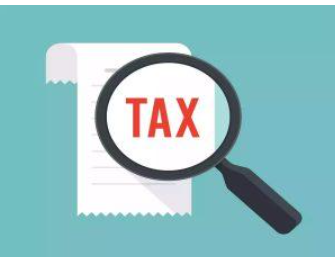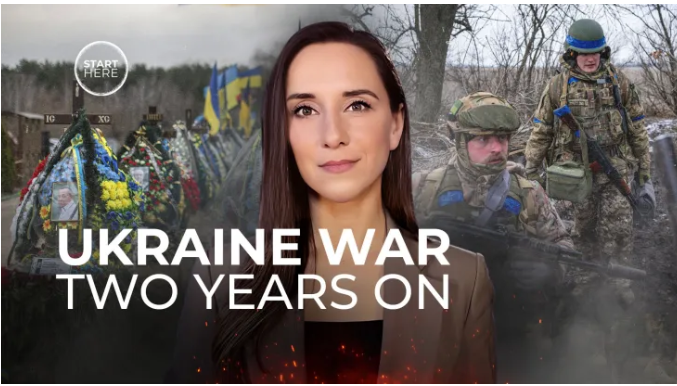Thursday, 29th February 2024
IGNCA’s Language Atlas
In News: The Indira Gandhi National Centre for Arts (IGNCA), an autonomous body under the Ministry of Culture, is set to conduct a nationwide linguistic survey. The goal is to create a comprehensive 'Language Atlas' showcasing India's rich linguistic diversity.
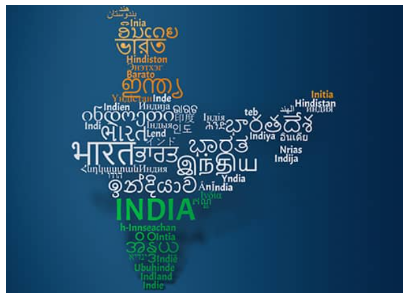
Linguistic Diversity in India: A Comprehensive Overview
- Historical Census Records
- Sir George Abraham Grierson conducted the first Linguistic Survey of India in 1928.
- The 1961 Census recorded 1,554 languages, including those with a single speaker.
- Evolution of Census Data
- Since 1971, languages spoken by fewer than 10,000 individuals are excluded.
- Exclusion disproportionately affects tribal communities, leaving 1.2 million people's native tongues unrecorded.
- Official Recognition and Census Data (2011)
- India officially recognizes 22 languages listed in Schedule 8 of the Indian Constitution.
- 97% of the population speaks one of these officially recognized languages.
- Additional Non-Scheduled Languages
- According to the 2011 Census, there are 99 non-scheduled languages.
- Approximately 37.8 million people identify with these languages as their mother tongue.
- Multilingualism in India
- India is among the most linguistically diverse countries globally.
- 2011 Census indicates over 25% of the population speaks two languages, while 7% speak three languages.
Key Highlights of Proposed Linguistic Survey
- Aims to enumerate languages and dialects, including those on the verge of extinction.
- Plans to digitally archive audio recordings of all languages spoken.
- Stakeholders include Ministries of Culture, Education, Tribal Affairs, and language communities.
Importance of Linguistic Survey
- Preservation of Cultural Heritage: Identifying and documenting languages preserves cultural heritage.
- Policy Formulation: Informs language-related policies in education, governance, and cultural affairs.
- Education Planning: Assists in designing inclusive educational programs based on linguistic backgrounds.
- Community Empowerment: Validates linguistic minorities, contributing to socio-economic and cultural well-being.
- Research and Documentation: Valuable resource for studying language evolution, dialectology, and language contact phenomena.
- Promotion of Multilingualism: Raises awareness and fosters pride in linguistic diversity.
Constitutional Provisions Related to Language
- Eighth Schedule lists 22 official languages.
- Articles 343 to 351 in Part XVII deal with official languages, language of the Union, and regional languages.
- Special directives in Articles 29, 350, and 350A focus on protecting linguistic minorities.
Challenges to Linguistic Diversity
- Linguistic Hegemony: Dominance of certain languages poses a threat to diversity.
- Identity Politics and Tensions: Diversity can lead to conflicts over language policies.
- Lack of Preservation Efforts: Indigenous languages face extinction without adequate support.
- Inadequate Language Education Policies: Insufficient emphasis on regional languages can lead to decline.
- Urbanisation and Globalisation: Influences of dominant cultures may erode indigenous languages.
- Limited Access to Resources: Minority languages often lack literature, media, and technology.
Way Forward
- Implement policies promoting education in regional languages alongside Hindi and English.
- Review and revise educational policies to support multilingualism and preserve regional languages.
- Establish standards for regional languages and support efforts for documentation and preservation.
- Empower linguistic communities through community-driven language revitalization projects.
|
UPSC Previous Year Questions Prelims (2021) Q. Consider the following statements:
Which of the above statements is/are correct? (a) 1 only Ans: (b) Prelims (2021) Q2. With reference to India, the terms ‘HaIbi, Ho and Kui’ pertain to (a) dance forms of Northwest India Ans: (d) Prelims (2015) Q.3 Which one of the following was given classical language status recently? (a) Odia Ans: (a) |
Source: TH
Maharashtra Exempts Private Schools from RTE Quota Admissions
In News: The school education department in Maharashtra has recently released a gazette notification that grants an exemption to private unaided schools from the obligatory 25% admission quota for disadvantaged groups and weaker sections, subject to specific conditions.
New Rule Impacting School Admissions in Maharashtra
- Prohibits private unaided schools in Maharashtra from allocating 25% admissions to disadvantaged groups and weaker sections.
- Exemption applies if government or aided schools are within a one-kilometer radius of the private school.
- Students in these areas get admission priority in government or aided schools.
- Overview of the New Rule
- Reasons Behind State Introductions
- Karnataka's law minister in 2018 highlighted the aim of RTE to offer education to all students.
- Previous policies allowing parents to enroll children in private schools affected government school enrollments.
- Concerns raised about state failure to reimburse fees for students admitted under RTE quota.
- Likely Implications of Exemption
- Arguments Against:
- Questions raised on the state's authority to amend central law, seen as contradicting RTE.
- Critics emphasize the importance of Section 12(1)(C) in combating education inequality.
- Arguments in Favour:
- Maharashtra government cites empowerment by Section 38 of the RTE Act to formulate rules.
- Changes are to rules drafted in 2011 and 2013, not the original law.
- Private unaided schools welcome the move, anticipating increased government school enrollments.
Significant Provisions of the RTE Act
- Right to Free and Compulsory Elementary Education:
- Entitlement of children aged 6-14 to free, compulsory education.
- Aided schools mandated to offer free education, not less than 25%.
- Curriculum and Recognition:
- Curriculum and evaluation by designated academic authority.
- Schools must adhere to pupil-teacher ratio norms and meet prescribed standards.
- Responsibilities of Schools and Teachers:
- Prohibition on teachers giving private tuition or non-teaching tasks.
- Establishment of School Management Committees (SMCs) for oversight.
- Grievance Redressal:
- National Commission for the Protection of Child Rights for complaints.
- State government may establish a State Commission for similar functions.
Conclusion
- While easing financial burdens on private schools, the move raises concerns about equity and access to quality education.
- Balancing support for private schools and ensuring inclusive education remains a contentious issue.
|
UPSC Previous Year Questions Prelims (2018) Q. Consider the following statements:
Which of the statements given above is/are correct? (a) 1 and 2 (b) 2 only (c) 1 and 3 (d) 3 only Ans: (b) Mains (2022) Q. The Right of Children to Free and Compulsory Education Act, 2009 remains inadequate in promoting incentive-based systems for children's education without generating awareness about the importance of schooling. Analyse. Mains (2020) Q. “Education is not an injunction, it is an effective and pervasive tool for all-round development of an individual and social transformation”. Examine the New Education Policy, 2020 (NEP, 2020) in light of the above statement. |
Source: IE
Amendment to Surrogacy Rules
In News: The Surrogacy (Regulation) Rules, 2022, were recently amended by the Indian government to permit married couples to utilize the egg or sperm of a donor when one of the partners is facing a medical condition.
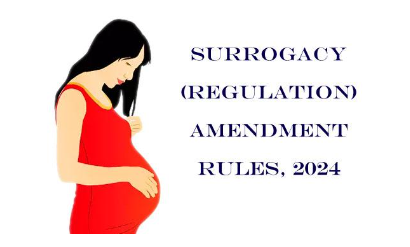
Major Amendments in Surrogacy Rules
- Background of Amended Rules
- March 2023 amendments limited surrogacy to the intending couple's gametes, impacting couples with specific medical conditions.
- Legal challenges arose, including a case in the Supreme Court by a woman with Mayer-Rokitansky-Kuster-Hauser (MRKH) Syndrome.
- Recent Amended Provisions
- Surrogacy with donor gametes allowed if either spouse has a certified medical need for donor gametes by the District Medical Board.
- Both partners with medical issues still cannot opt for surrogacy.
- Divorced or widowed women opting for surrogacy mandated to use their own eggs alongside donor sperm.
Understanding Surrogacy
- Types
- Traditional Surrogacy: Uses the intended father's sperm to fertilize the surrogate's egg, making the baby biologically related to both.
- Gestational Surrogacy: Involves an embryo, created using the intended father's sperm and biological mother's egg, implanted into the surrogate.
Surrogacy Arrangements
- Altruistic Surrogacy: Surrogate receives minimal financial compensation, motivated by helping others.
- Commercial Surrogacy: Involves contractual compensation for the surrogate beyond medical expenses.
Other Provisions Related to Surrogacy in India:
- Surrogacy permitted for altruistic purposes or couples with proven infertility or disease.
- Commercial surrogacy strictly prohibited.
Eligibility Requirements for Couples:
- Marriage duration of at least 5 years.
- Wife aged between 25-50, husband between 26-55.
- No living child unless disabled or facing life-threatening disorders.
Surrogate Mother Criteria:
- Must be a close relative, married with at least one child.
- Age between 25-35, and only allowed to be a surrogate once.
Parental Status upon Birth:
- Child legally recognized as the biological child of the intended couple.
- Abortion requires consent from both surrogate mother and relevant authorities under the Medical Termination of Pregnancy Act.
Source: IE
Pey Jal Survekshan Awards
In News: The inaugural Pey Jal Survekshan Awards were recently announced by the Ministry of Housing & Urban Affairs.
Pey Jal Survekshan Awards Overview
- Distinguished Awards
- A total of 130 awards to be presented, recognizing outstanding achievements of cities and states.
- City Awards Categories
- Pey Jal Gold, Silver, and Bronze City Awards.
- Gold signifies top performers in population categories (1 to 10 Lakh, 10 to 40 Lakh, and More than 40 Lakh).
- Silver represents the 2nd position, and Bronze denotes the 3rd.
- Additional Award Categories
- Commendations for Best Water Body, Sustainability Champion, Reuse Champion, Water Quality, City Saturation, and AMRUT 2.0 Rotating Trophy of the Year.
- Evaluation Parameters
- Diverse parameters include access, coverage, water quality at treatment plants and households.
- Sustainability criteria cover the health of water bodies, availability of SCADA/flowmeters, and reuse of treated used water.
- Star Rating System
- Cities graded on a star rating scale, ranging from 5 stars to No star.
- Evaluation based on performance across critical criteria.
- Testing and Citizen Involvement
- Pey Jal Survekshan ensures clean water through independent NABL lab testing at both source and citizen-end.
- Data Collection Methodology
- Utilizes a GIS-enabled web portal for accurate and transparent data collection.
- Geo-tagging and infrastructure mapping employed during the survey process.
- Significance of Results
- Expected to influence ULB decision-making.
- Enhances service delivery and promotes citizen engagement.
- Instills a sense of ownership and knowledge dissemination about water conservation and optimal use.
Source: PIB
General Agreement on Trade in Services (GATS)
In News: Approximately 72 nations have voluntarily accepted extra responsibilities within the General Agreement on Trade in Services (GATS) to facilitate non-goods trade among themselves. They have also extended these comparable concessions to all other member countries of the World Trade Organization (WTO).
Overview of the General Agreement on Trade in Services (GATS)
- WTO Treaty
- GATS is a treaty within the World Trade Organization (WTO), designed to expand the multilateral trading system to the service sector.
- Parallel to GATT
- Created to mirror the General Agreement on Tariffs and Trade (GATT), which facilitates a system for merchandise trade.
- Origins and Enforcement
- Originated during the Uruguay Round of Multilateral Trade Negotiations.
- Became effective on January 1, 1995.
- Membership
- All WTO members automatically become members of GATS, including countries like India.
- Basic Obligations
- General obligations applicable to all members and the services sector.
- Specific commitments outlined in individual schedules, varying between members.
- Scope of Application
- GATS generally applies to all service sectors, except for two specific exceptions.
- Exemptions
- Exemptions include services supplied in the exercise of governmental authority, not on a commercial basis or in competition.
- Examples encompass social security schemes and non-market public services like health or education.
- Annex on Air Transport Services
- Exempts measures affecting air traffic rights and directly related services from coverage.
- New Obligations - Services Domestic Regulation (DSR)
- Introduces new obligations under individual schedules in GATS.
- Aims to address unintended trade-restrictive effects related to licensing requirements, qualification procedures, and technical standards.
- These obligations operate under a "most-favored-nation" principle, benefiting all WTO members.
- Implementation
- Services Domestic Regulation (DSR) came into effect during the 13th Ministerial Conference of the WTO.
Source: FE
Africa Club
In News: During the 37th African Union Summit, member nations initiated the establishment of the Africa Club.
Overview of Africa Club
- Formation and Purpose
- The Africa Club is the Alliance of African Multilateral Financial Institutions, established at the African Union summit.
- It comprises African-owned and controlled financial institutions.
- Objectives
- Aims to enhance Africa's influence in the global financial system.
- Aligns its functions with the Sustainable Development Goals (SDGs) and the African Union's Agenda 2063.
- Initiatives
- Introduces innovative financial instruments.
- Provides a platform for discussions on debt management.
- Promotes collaborative efforts to address the specific needs of African countries.
- Member Institutions
- Includes prominent financial institutions like the African Export Import Bank, Trade and Development Bank, Africa Finance Corporation, African Reinsurance Corporation, African Trade and Investment Development Insurance, Shelter Afrique Development Bank, and ZEP – RE (PTA Reinsurance Co).
Key Facts about the African Union (AU)
- Nature and Membership
- The AU is an intergovernmental organization comprising 55 member states from the African Continent.
- Functions as a continental union with diverse goals to strengthen member states individually and collectively.
- Establishment
- Officially launched in 2002 as the successor to the Organisation of African Unity (OAU), which existed from 1963 to 1999.
- Headquarters
- Located in Addis Ababa, Ethiopia.
Source: DTE
North Atlantic Right Whales
In News: Scientists have recently identified a trend indicating a reduction in the size of North Atlantic right whales, adversely affecting their reproductive capabilities.
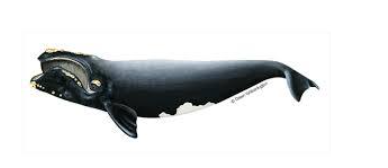
North Atlantic Right Whales Overview
- Migratory Behavior
- These whales are migratory, spending winters in warmer waters and migrating to polar regions for cooler waters in late summer.
- Habitat
- Inhabit temperate and subpolar waters of the North Atlantic and North Pacific oceans.
- Depending on the season and hemisphere, they are often found near bays, peninsulas, and shallow coastal waters.
- Distribution
- Primarily restricted to coastal waters along the East coast of the United States and Canada.
- Species Recognition
- Three recognized species of right whales:
- Southern Right Whales (Eubalaena australis)
- North Atlantic Right Whales (Eubalaena glacialis)
- North Pacific Right Whales
- Feeding Behavior
- Skim feed near the water surface, swimming slowly through plankton clouds with mouths half-open.
- Strain plankton through their long baleen plates.
- Conservation Status
- IUCN Status: Critically Endangered
- CITES Listing: Appendix I
Source: LS
Genie AI Model
In News: Google DeepMind recently unveiled Genie, a novel model capable of creating interactive video games based solely on a text or image prompt.
Overview of Genie AI Model
- Foundation and Training Source
- Genie is a foundational world model trained on videos gathered from the Internet.
- Generative Capabilities
- The model has the ability to "generate an endless variety of playable worlds from synthetic images, photographs, and sketches."
- Unsupervised Training
- Notably, Genie is the first generative interactive environment trained in an unsupervised manner using unlabelled internet videos.
- Specifications
- Genie is equipped with 11 billion parameters.
- Components include a spatiotemporal video tokenizer, an autoregressive dynamics model, and a scalable latent action model.
- Technical Abilities
- Genie can operate in generated environments on a frame-by-frame basis without the need for training, labels, or domain-specific requirements.
- Diverse Prompting
- Capable of generating diverse, interactive, and controllable environments even when prompted with images it has never encountered before, such as real-world photographs or sketches.
- Training Focus
- Primarily trained on videos of 2D platformer games and robotics.
- General Method and Scalability
- Trained on a general method, making it adaptable to various domains.
- Designed to scale effectively, accommodating larger Internet datasets.
- Control Reproduction
- A standout feature is Genie's ability to learn and reproduce controls for in-game characters solely from internet videos.
- Creation from Single Image
- Enables the creation of entire new interactive environments from a single image prompt.
Source: IE
International Astronomical Union (IAU)
In News: Recently, the International Astronomical Union officially validated the presence of three currently unnamed moons—one encircling Uranus and two circling Neptune.

Overview of the International Astronomical Union (IAU)
- Establishment and Purpose
- Founded in 1919, the IAU is the pioneering international union for the advancement of specific branches of science, governing worldwide professional astronomical activities.
- Mission
- Aims to promote and safeguard the science of astronomy comprehensively.
- Focuses on research, communication, education, and development through global collaboration.
- Organizational Structure
- Comprises divisions, commissions, and working groups representing various facets of astronomical research, teaching, and related endeavors.
- Membership Composition
- Individual members include professional astronomers globally, holding Ph.D. degrees or beyond, engaged in research, education, and outreach in astronomy.
- Junior members are also part of the IAU.
- Membership spans 92 countries, with 85 designated as National Members.
- Diverse Activities
- Engages in defining fundamental astronomical and dynamical constants, establishing unambiguous astronomical nomenclature, and promptly disseminating new discoveries.
- Organizes international observing campaigns, fosters educational activities, and discusses potential future international large-scale facilities.
- Naming Authority
- Solely recognized organization for the professional naming of astronomical bodies, based on merit, historical significance, or discoverer’s privilege.
- General Assembly
- Conducts a general assembly every three years in various global locations.
- Facilitates professional astronomers' meetings to discuss research, collaborative ventures, and other matters of mutual interest.
- Public Engagement
- Works to promote research, education, and public outreach activities in astronomy for the broader public.
- Headquarters
- The headquarters are located in Paris, France.
Source: LS
Safeguarding Privacy: Essential for Democracy
In News: The emergence of the big data economy has transformed the landscape of elections and individual voting behaviours, bringing forth both benefits and drawbacks.
Concerns Regarding Big Data's Impact on Elections
- Micro-Targeting and Customization
- Big data enables micro-targeting, tailoring campaign messages to specific demographics or individual voters.
- Customized outreach efforts extend across various communication channels, including bulk SMS, audio calls, and social media platforms.
- Opacity and Lack of Informed Consent
- Lack of transparency in the collection and utilization of personal information raises concerns.
- Voters often remain unaware of detailed databases containing their personal information, challenging the notion of informed consent.
- Amplification of Power Dynamics and Political Influence
- Abundance of data amplifies the power of political entities to influence voters through targeted messaging.
- Sophisticated targeting extends to nuanced aspects such as personal preferences, ideologies, and habits.
- Potential for Manipulation and Exploitation
- While big data offers campaign efficiency, there's a dark side with potential manipulation and misinformation dissemination.
- Asymmetry of information raises ethical concerns about privacy invasion and democratic principles.
Understanding Social Media and Network Effects
- The Network Effect
- The increasing value of social media networks with a larger user base.
- Draw of platforms with enhanced potential for connectivity, content creation, and interaction.
- Enhanced Data Collection and User Profiling
- Social media platforms thrive on collecting detailed user profiles beyond apparent attributes.
- Extensive data collection facilitates targeted advertising and personalized content delivery.
- Opaqueness of Data Collection Practices
- Users often uninformed about the extent of data collected, raising privacy concerns.
- Lack of transparency leads to individuals having little control over their data utilization.
- Algorithmic Decision-Making and Personalization
- Algorithms play a crucial role in shaping user experiences based on collected data.
- Concerns arise regarding algorithmic biases and selective presentation of information.
- Monetization and Commercial Exploitation
- Social media platforms leverage user data for monetization through personalized ads.
- Economic benefits for platforms raise ethical concerns about the commodification of user information.
Scrutiny and Awareness Post-2016 US Presidential Election
- Misuse of Facebook data by Cambridge Analytica heightened public awareness.
- Calls for increased transparency and privacy safeguards intensified
Critical Flaws in Indian Data Protection Act
- Government's Powers and Data Protection Board
- Absence of clear limitations on government powers raises concerns about potential misuse.
- Lack of independence for the Data Protection Board compromises its effectiveness.
- Actionable Rights and Privacy Violations
- Absence of essential rights, including the right to compensation, limits individuals' ability to seek redress.
- Reports of withholding information under the Data Protection Act highlight confusion and potential misuse.
Way Forward
- Opportunity for Mitigation and Privacy Protection
- Imminent rules guiding the Data Protection Act implementation present an opportunity.
- Stakeholder engagement and multi-stakeholder consultations are crucial for diverse perspectives.
- Prioritize Impact on Individuals
- Rules must prioritize the impact on individuals, placing rights and privacy at the forefront.
- Sustained and inclusive consultation processes should address concerns of various stakeholders.
- Necessity for Legislative Changes
- While rules serve as corrective measures, legislative changes are necessary to address foundational flaws.
- Striking a balance between feasibility and inclusivity is crucial to avoid rushed amendments.
Conclusion
- India needs a people-centric data protection regime balancing digitization benefits with privacy and democratic principles.
- Inclusive and rights-based models are essential to navigate big data challenges for a resilient and equitable digital future.
Source: IE
Share the article
Edukemy’s Current Affairs Quiz is published with multiple choice questions for UPSC exams
MCQ
Get Latest Updates on Offers, Event dates, and free Mentorship sessions.

Get in touch with our Expert Academic Counsellors 👋
FAQs
UPSC Daily Current Affairs focuses on learning current events on a daily basis. An aspirant needs to study regular and updated information about current events, news, and relevant topics that are important for UPSC aspirants. It covers national and international affairs, government policies, socio-economic issues, science and technology advancements, and more.
UPSC Daily Current Affairs provides aspirants with a concise and comprehensive overview of the latest happenings and developments across various fields. It helps aspirants stay updated with current affairs and provides them with valuable insights and analysis, which are essential for answering questions in the UPSC examinations. It enhances their knowledge, analytical skills, and ability to connect current affairs with the UPSC syllabus.
UPSC Daily Current Affairs covers a wide range of topics, including politics, economics, science and technology, environment, social issues, governance, international relations, and more. It offers news summaries, in-depth analyses, editorials, opinion pieces, and relevant study materials. It also provides practice questions and quizzes to help aspirants test their understanding of current affairs.
Edukemy's UPSC Daily Current Affairs can be accessed through:
- UPSC Daily Current Affairs can be accessed through Current Affairs tab at the top of the Main Page of Edukemy.
- Edukemy Mobile app: The Daily Current Affairs can also be access through Edukemy Mobile App.
- Social media: Follow Edukemy’s official social media accounts or pages that provide UPSC Daily Current Affairs updates, including Facebook, Twitter, or Telegram channels.


